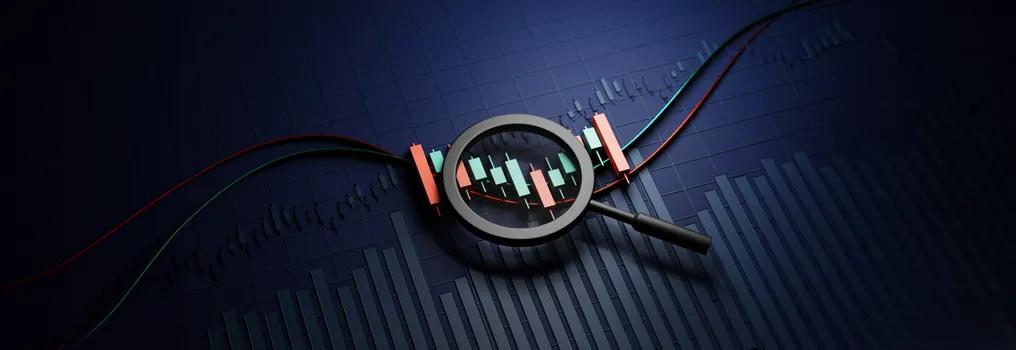USA
U.S. stocks wrapped up a turbulent week and a volatile month with gains as optimism about a potential rate cut grew following the Federal Reserve’s latest inflation report. The main U.S. indices closed mixed, with the NASDAQ declining by 0.92%, the S&P 500 climbing 0.24%, and the Dow increasing by 0.94%. The Fed's preferred inflation gauge indicated a slight increase in July, with the Commerce Department reporting a 0.2% rise in the personal consumption expenditures (PCE) price index, matching Dow Jones estimates. Over the past year, the index climbed 2.5%, while core PCE, which excludes food and energy, also rose 0.2% for the month and 2.6% annually—slightly below the anticipated 2.7%.
Additionally, the U.S. economy outperformed expectations in the second quarter, with GDP growth revised up to an annual rate of 3% from 2.8%. Weekly jobless claims fell to 231,000, lower than the 232,000 expected by economists, signaling ongoing strength in the labor market.
Europe
Last week, the indices closed in the green. The STOXX Europe 600 Index finished 1.34% higher. Among the major continental indices, France's CAC 40 gained 0.71%, and Spain’s IBEX 35 rose by 1.10%. The UK’s FTSE 100 Index increased by 0.59%, while Germany's DAX closed 1.47% higher. A representative of the European Central Bank (ECB), Joachim Nagel, stated on Thursday that the ECB should avoid reducing interest rates too quickly. In August, Eurozone consumer inflation (CPI) rose by 0.2% month-over-month (expected +0.2% / previous 0%) and by 2.2% year-over-year (expected +2.2% / previous +2.6%). The core CPI increased by 2.8% year-over-year (expected +2.8% / previous +2.9%). The Chief Economist of the European Central Bank (ECB), Philip Lane, mentioned that the regulator has made significant progress in bringing inflation down to the target level of 2%, but further easing of monetary policy remains uncertain. Recent data shows that eurozone inflation is approaching the European Central Bank's target, while the economy is displaying signs of weakness, increasing the likelihood of a further interest rate cut at the ECB's upcoming meeting on September 12.
Japan
Japan has a relatively quiet week ahead, The Nikkei 225 index closed the week slightly higher, gaining 0.74%, while the broader Topix index saw an a modest increase of 1.04%. Consumer inflation in Tokyo rose faster than expected in August, fueling speculation that the Bank of Japan (BOJ) might raise interest rates again. Tokyo’s core consumer-price index (CPI), excluding fresh food, increased by 2.4% year-on-year in August, up from 2.2% in July, partly due to the reduction of energy subsidies. This rise exceeded economists’ forecasts of 2.2% growth, indicating that broader inflation could remain above the BOJ’s 2% target longer than anticipated. Industrial output in Japan also recovered sharply in July, with production rising by 2.8% after a decline in June, largely due to a rebound in car production. Retail sales grew by 2.6% year-on-year in July, further supporting expectations of another rate hike by the BOJ. BOJ officials, including Governor Kazuo Ueda, have suggested that further rate increases are possible if economic and inflation data align with projections. However, the outlook remains uncertain, as companies expect a rise in production in August but a decline in September.
China
Shanghai Composite Index edged rose by 1.05%. In Hong Kong, the benchmark Hang Seng Index increased by 0.76%. A private measure of China's manufacturing activity showed growth in August, contrasting with the official data, which indicated a decline, highlighting a mixed outlook for the sector. The Caixin manufacturing PMI rose to 50.4 in August from 49.8 in July, suggesting expansion, while the official PMI fell to 49.1, marking its fourth consecutive month below the 50-point threshold that separates growth from contraction. The Caixin index, which focuses more on smaller, export-oriented companies, suggests resilience among these manufacturers. Factory production grew for the 10th month in a row, driven by consumer and intermediate goods sectors, and overall demand improved with new orders returning to growth. Employment stabilized after 11 months of decline, though optimism about future output remains limited. Despite signs of stabilization, key issues like weak domestic demand persist, prompting calls for enhanced policy support and better implementation of existing measures.
